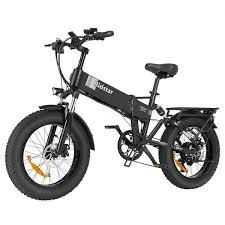
- Afrikaans
- Albanian
- Amharic
- Arabic
- Armenian
- Azerbaijani
- Basque
- Belarusian
- Bengali
- Bosnian
- Bulgarian
- Catalan
- Cebuano
- Corsican
- Croatian
- Czech
- Danish
- Dutch
- English
- Esperanto
- Estonian
- Finnish
- French
- Frisian
- Galician
- Georgian
- German
- Greek
- Gujarati
- Haitian Creole
- hausa
- hawaiian
- Hebrew
- Hindi
- Miao
- Hungarian
- Icelandic
- igbo
- Indonesian
- irish
- Italian
- Japanese
- Javanese
- Kannada
- kazakh
- Khmer
- Rwandese
- Korean
- Kurdish
- Kyrgyz
- Lao
- Latin
- Latvian
- Lithuanian
- Luxembourgish
- Macedonian
- Malgashi
- Malay
- Malayalam
- Maltese
- Maori
- Marathi
- Mongolian
- Myanmar
- Nepali
- Norwegian
- Norwegian
- Occitan
- Pashto
- Persian
- Polish
- Portuguese
- Punjabi
- Romanian
- Russian
- Samoan
- Scottish Gaelic
- Serbian
- Sesotho
- Shona
- Sindhi
- Sinhala
- Slovak
- Slovenian
- Somali
- Spanish
- Sundanese
- Swahili
- Swedish
- Tagalog
- Tajik
- Tamil
- Tatar
- Telugu
- Thai
- Turkish
- Turkmen
- Ukrainian
- Urdu
- Uighur
- Uzbek
- Vietnamese
- Welsh
- Bantu
- Yiddish
- Yoruba
- Zulu
Nov . 12, 2024 14:22 Back to list
how to set front derailleur on mountain bike
How to Set Up the Front Derailleur on a Mountain Bike
Setting up the front derailleur on a mountain bike is essential for ensuring smooth gear changes and optimal performance on various terrains. The front derailleur allows you to switch between the different chainrings on your bike’s crankset, providing you with a wider range of gears. Proper adjustment can enhance your riding experience and prolong the life of your drivetrain. Here’s a step-by-step guide on how to set up your front derailleur correctly.
Tools You Will Need
Before you begin, make sure you have the following tools
1. Screwdriver (usually Phillips head) 2. 5mm Allen wrench 3. Chain checker (optional, but helpful) 4. Clean rags 5. Bike stand (optional, but can make the process easier)
Step 1 Prepare Your Bike
Start by placing your bike on a stable surface or in a bike stand. Shift your chain onto the smallest chainring and the smallest rear cog to relieve tension on the derailleur. This position allows for easier adjustments.
Step 2 Check the Derailleur Position
The front derailleur should be mounted at an angle that allows the chain to pass smoothly between the chainrings. There should be a gap of about 1-3mm between the derailleur cage and the chain when in the smallest chainring. Adjust the mounting position by loosening the derailleur clamp bolt with the 5mm Allen wrench and repositioning it if necessary.
Step 3 Adjust the Height of the Derailleur
how to set front derailleur on mountain bike

The derailleur should be positioned so that the bottom of the cage is parallel to the chainrings. For most mountain bikes, the cage should be about 1-3mm above the largest chainring. If needed, adjust the height by either raising or lowering it at the clamp.
Step 4 Set the Limit Screws
Your front derailleur should have two limit screws, typically marked as 'High' and 'Low.' The 'High' limit screw prevents the chain from shifting beyond the biggest chainring, while the 'Low' limit screw keeps it from going past the smallest.
1. High Limit Screw Shift to the largest chainring and the smallest rear cog. Adjust the high limit screw until the derailleur cage is just close enough to the chain without making contact. The chain should shift smoothly onto the big ring. 2. Low Limit Screw Shift to the smallest chainring and the largest rear cog. Adjust the low limit screw similarly, ensuring the derailleur cage is close to the chain without interference, allowing for a smooth shift onto the small ring.
Step 5 Adjust Cable Tension
Cable tension is crucial for smooth shifting. To adjust, locate the barrel adjuster on the derailleur or shifter. With the front derailleur on the smallest chainring, shift to the largest rear cog. If the chain does not shift onto the big ring smoothly, increase cable tension by turning the barrel adjuster clockwise. Conversely, if it shifts too eagerly onto the big ring, decrease the tension by turning the barrel adjuster counterclockwise.
Step 6 Test Your Setup
Once you’ve completed the adjustments, it’s time to test your setup. Shift through all combinations of gears—big ring/small cog, big ring/large cog, and so on—ensuring that the chain moves seamlessly between chainrings without dropping or skipping.
Conclusion
Properly setting up the front derailleur on your mountain bike can significantly improve your riding experience. Regular checks and adjustments can help maintain optimal performance, particularly if you frequently ride on rough terrain. With these steps, you’ll ensure that your bike is ready to tackle any trail with confidence!
-
The Ultimate Kids' Four-Wheeler Experience
NewsJul.09,2025
-
The Ultimate Guide to Mountain Bikes: Gear Up for Your Ride
NewsJul.09,2025
-
The New Age of Cycling: Electric Bikes for Every Rider
NewsJul.09,2025
-
The Best Kids Bicycles: Ride in Style and Safety
NewsJul.09,2025
-
The Best 3-Wheel Scooters for Kids: Fun, Safety, and Adventure
NewsJul.09,2025
-
Revolutionize Your Ride: Affordable Electric Bikes
NewsJul.09,2025
-
Finding the Perfect Mountain Bike for Every Rider
NewsJul.09,2025



